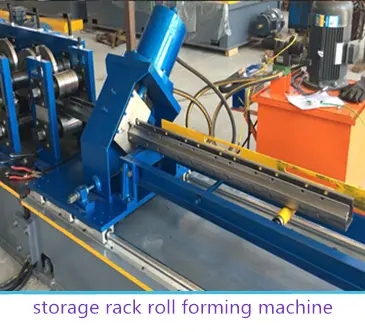
The Evolution and Importance of Automatic Round Downspout Roll Forming Machines
In the construction and manufacturing industries, efficiency and precision are two key components that determine the success of operations. One area where these factors are particularly crucial is in the production of downspouts. Downspouts, which are essential for directing rainwater away from roofs to prevent water damage and flooding, have traditionally been manufactured using various methods that often involve manual labor or outdated machinery. However, the advent of automatic round downspout roll forming machines has revolutionized this aspect of manufacturing, combining advanced technology with practical applications.
The Mechanism Behind Automatic Round Downspout Roll Forming Machines
At its core, an automatic round downspout roll forming machine is designed to produce downspouts in a streamlined and automated fashion. The machine uses coils of sheet metal, commonly aluminum or galvanized steel, which are fed through a series of rollers. These rollers shape the metal into the desired round profile, while integrated cutting mechanisms ensure that the lengths can be adjusted to meet specific requirements.
One of the standout features of these machines is their automation. Operators can set parameters for length, diameter, and material thickness through an intuitive interface, allowing the machine to produce high volumes of downspouts with minimal human intervention. This drastically reduces labor costs and minimizes the risk of human error, resulting in consistently high-quality products.
Benefits of Using Automatic Roll Forming Machines
1. Increased Efficiency Traditional manufacturing methods often required extensive labor hours and multiple machines to produce downspouts. Automatic roll forming machines consolidate this process, allowing for rapid production speeds. In many cases, these machines can produce hundreds of feet of downspout within a single hour, making them an ideal solution for high-demand environments.

2. Cost-Effectiveness While the initial investment in an automatic roll forming machine can be significant, the long-term savings are undeniable. With reduced labor costs, lower material waste, and the ability to produce high volumes, manufacturers can see a substantial return on investment.
3. Versatility Many automatic round downspout roll forming machines are designed to accommodate a variety of materials and styles. Depending on the configuration, manufacturers can produce not only standard round downspouts but also custom shapes and sizes, allowing for greater adaptability to client needs.
4. Enhanced Quality Control Automation ensures a level of precision that is difficult to achieve with manual processes. With computerized controls, the machine can maintain tight tolerances, producing downspouts that fit perfectly and function effectively. Moreover, the integration of quality control mechanisms in the machines ensures that any defects or inconsistencies are quickly identified and corrected.
5. Sustainability As industries are pushed towards greener practices, automatic roll forming machines can contribute to reduced environmental impact. These machines often come equipped with features that reduce scrap material and energy consumption, allowing manufacturers to operate more sustainably.
Conclusion
The automatic round downspout roll forming machine is a testament to how technology can enhance traditional manufacturing processes. By integrating automation and advanced engineering, these machines offer unparalleled efficiency, cost-effectiveness, and quality. As the demand for effective stormwater management solutions continues to grow, the capabilities of these machines will play a crucial role in meeting the needs of the construction industry.
Investing in an automatic round downspout roll forming machine not only helps manufacturers keep pace with market demands but also positions them for future success in an increasingly competitive environment. As technology continues to evolve, those who embrace automation will undoubtedly reap the rewards, leading the charge towards a more efficient and sustainable future in manufacturing.